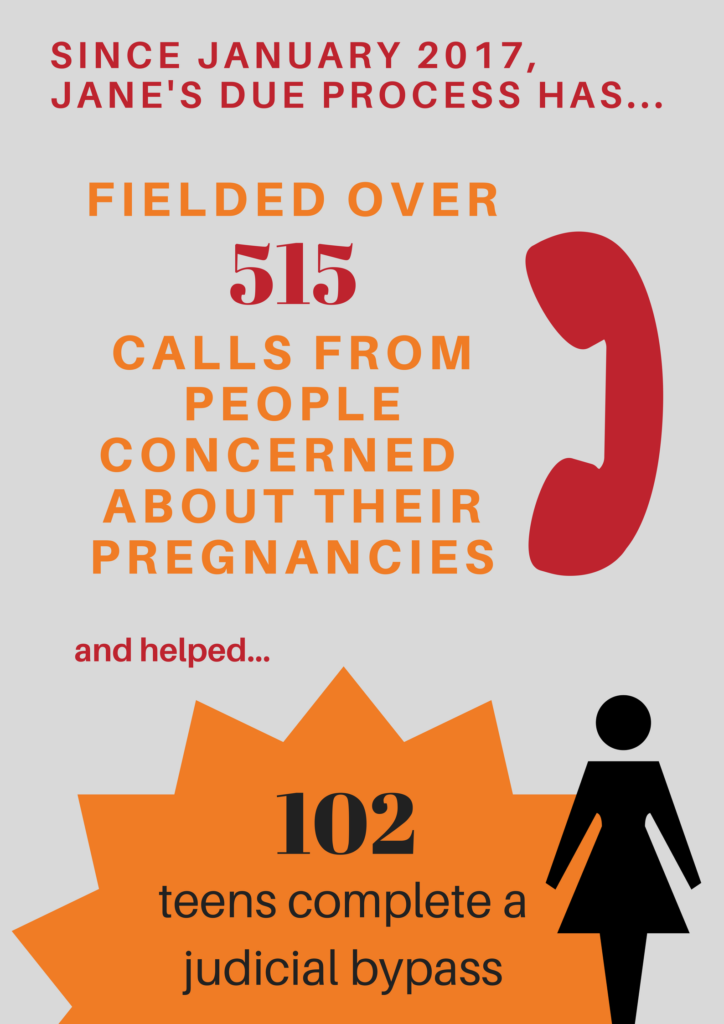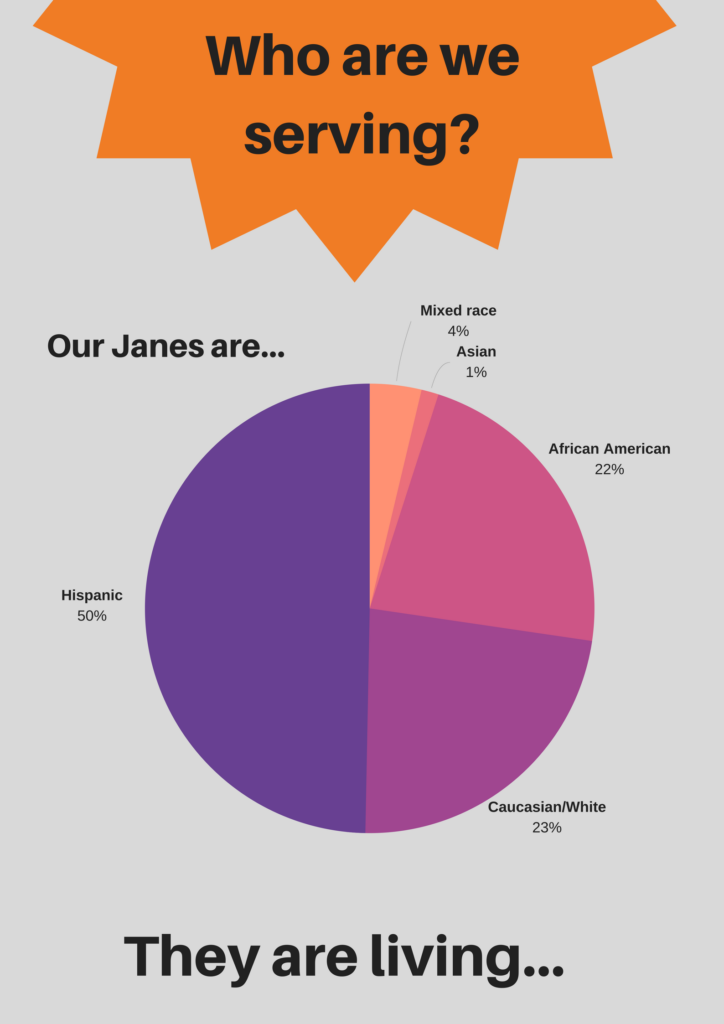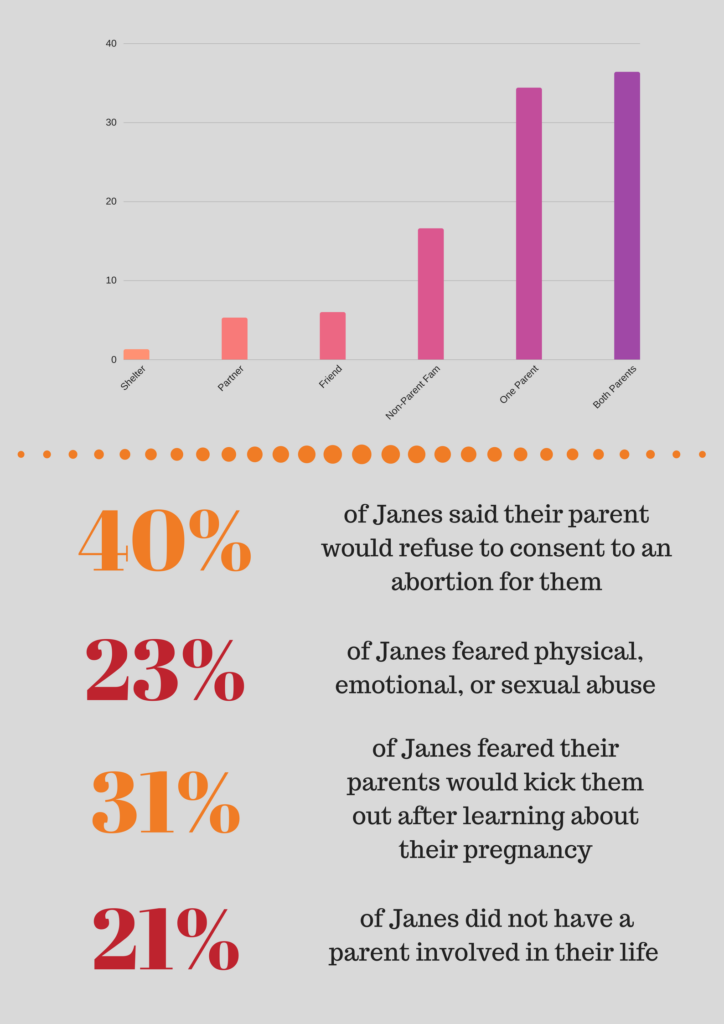Graphics & Content by Zoë Fay-Stindt
What has JDP been up to?
In the past six months, Jane’s Due Process has been pretty busy. Since January, our staff and volunteers have fielded over 515 calls from people concerned about their pregnancies and assisted 102 teens complete a judicial bypass.
Of the minors served in the last six months:
- 12% had been pregnant previously, of which 55% were parents, 25% had miscarriages, and 20% had abortions
- 70% were 17 years old, and 29% were not living with parents
Of the adults who called our hotline, 84% were calling from Texas, and almost all were looking for information about where they could get an abortion and how they could get additional funding.

Why do so many people end up needing abortion?
Like many adults getting abortions, many of the Janes we served had been trying to prevent pregnancy by using birth control. Half of the Janes served in the last six months used some form of birth control other than abortion. Over two thirds of those who did use birth control used condoms, others used some type of hormonal birth control. Of course, pregnancies while using birth control aren’t new – studies show that over 50% of those seeking abortion were using some form of contraception at the time of fertilization. Many of the Janes who couldn’t get birth control were failed by a lack of sex education or blocked by Texas’s parental consent for abortion laws, both of which have resulted in some of the highest teen pregnancy rates in the country. 28% of our Janes stated that they couldn’t get parental consent to use birth control. Far more were too scared to ask, didn’t realize that there were low-cost contraceptives available, or didn’t think they needed to use birth control. Most of them have never had any sex education.


How long is it taking for teens to get their abortion care?
One of the most difficult parts of judicial bypass for Janes is the delay in access to abortion care. When seeking abortion, and dealing with nausea, fatigue, and other side effects of pregnancy, every day can feel like an eternity. A Jane’s average wait time for an abortion was 18.5 days after her initial intake call with JDP. While anyone trying to get an abortion in Texas must endure a 24-hour waiting period, Janes must also balance the logistical challenges of fitting not just an ultrasound and abortion appointment with the same doctor into their schedule, but also meeting with an attorney and going to court. This wait time almost doubled if a Jane had to reschedule an appointment for any reason. Since January, 22% of Janes had to reschedule an appointment.
Concerns for the rest of 2017
Increased wait time could have an impact on the completion of the abortion itself. During the regular legislative session earlier this year, Texas legislators passed a ban on dilation and extraction abortions – by the far the safest and most common abortion procedure for second trimester abortions. Unless enjoined by a court, the law will go into effect September 1, and will ban abortion in Texas starting at 14 weeks.
This law could have a disproportionate impact on teens, since they tend to take longer to realize they are pregnant than adults, and because they face the additional delay of judicial bypass. Most adults realize they are pregnant after their first missed period, or around 5 or 6 weeks into their pregnancy (measured from their last menstrual period). Because of irregular cycles, lack of understanding of how pregnancy works, or breakthrough bleeding, many teens find out later. Only 28% of Janes accurately estimate the stage of their pregnancy, and over half of them underestimate its length by an average of 3.5 weeks. This could mean that if the new law isn’t blocked by the courts, many Janes could be barred from getting an abortion before they even realize they are pregnant.



